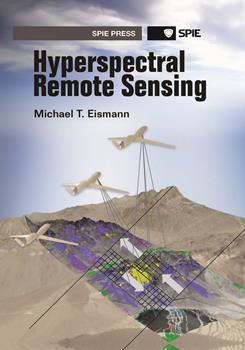|
The previous two chapters dealt with the relationship between the intrinsic spectral properties of materials, such as the absorption coefficient and complex index of refraction as they relate to the chemical composition of the medium. Such properties are not directly measurable. Instead, what one is able to measure, either remotely or in a laboratory setting, are apparent spectral properties such as reflectance and transmission. Such properties are related not only to the chemical composition, but also the physical makeup of the material, including features such as physical dimensions, scatterer concentrations and size distributions, and surface roughness characteristics. This chapter proceeds in two major sections. The first section is largely theoretical in nature, establishing the relationships between the intrinsic and apparent spectral properties of materials. This begins with the simple case of a single homogenous layer with smooth surfaces but continues to deal with scattering layers, multiple layers, rough surfaces, and surface emission. The second section provides a more empirical investigation of the measured properties of common remote sensing materials, such as atmospheric gases, liquid water, vegetation, minerals, soils, and manmade materials. 4.1 Apparent Spectral Properties Apparent spectral properties provide the observable signature for hyperspectral remote sensors and are measurable quantities. These include spectral reflectance, transmittance, and emissivity. Spectral reflectance is defined here as the ratio of spectral irradiance reflected off a material to spectral irradiance incident on the material. Similarly, spectral transmittance is the ratio of spectral irradiance transmitted through the material to the incident irradiance. An inferred quantity that is related to these two properties through conservation of energy is the spectral absorbance, which is the ratio of irradiance absorbed in the material to the incident irradiance upon it. Spectral emissivity, which is the ratio of emitted spectral radiance to that of an ideal blackbody, is also related to absorbance. Note that the simple definitions given here do not account for the directionality of reflected and transmitted irradiance, an important issue when dealing with rough surfaces and scattering media. More-precise definitions are provided later in this chapter to account for this increased complexity. |
|
|


